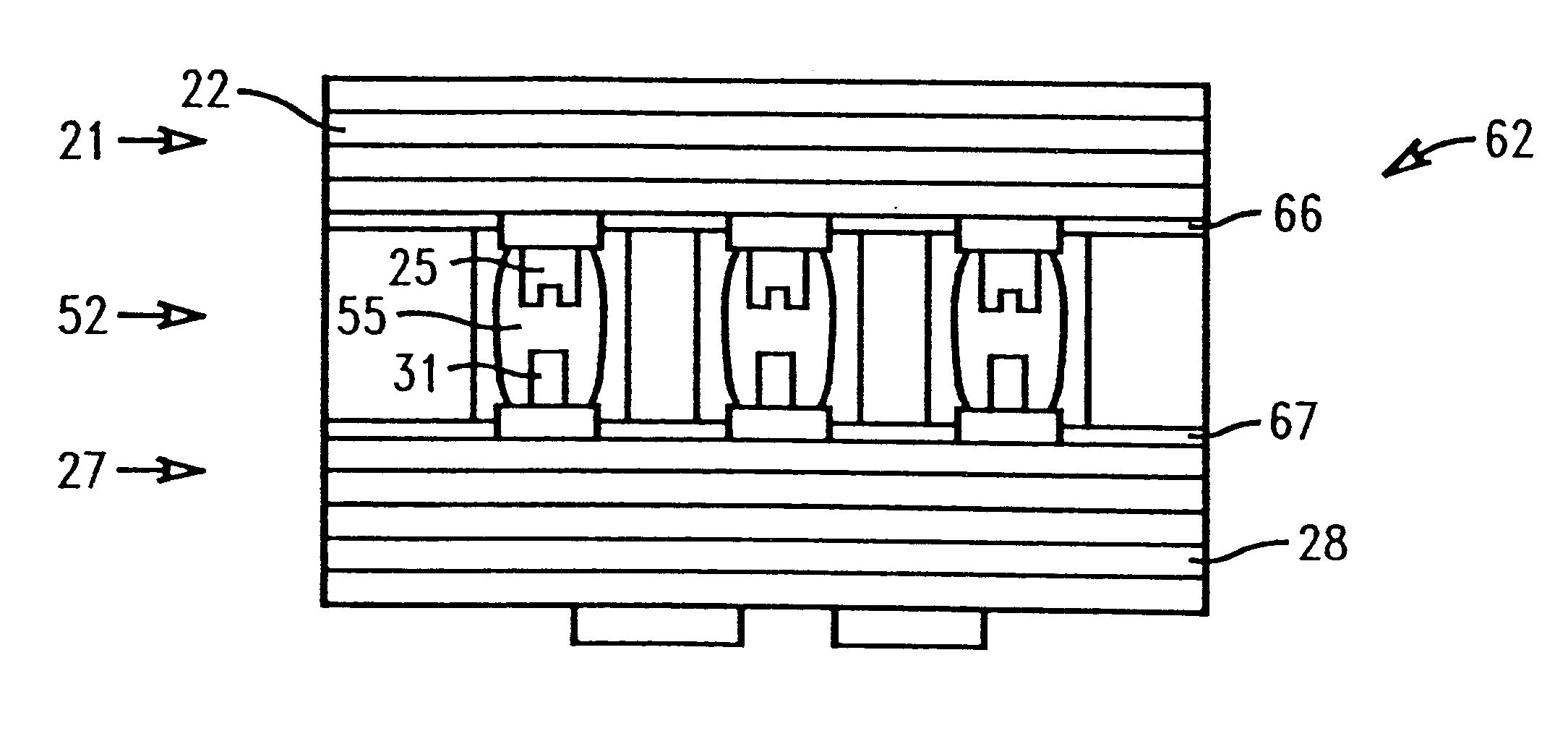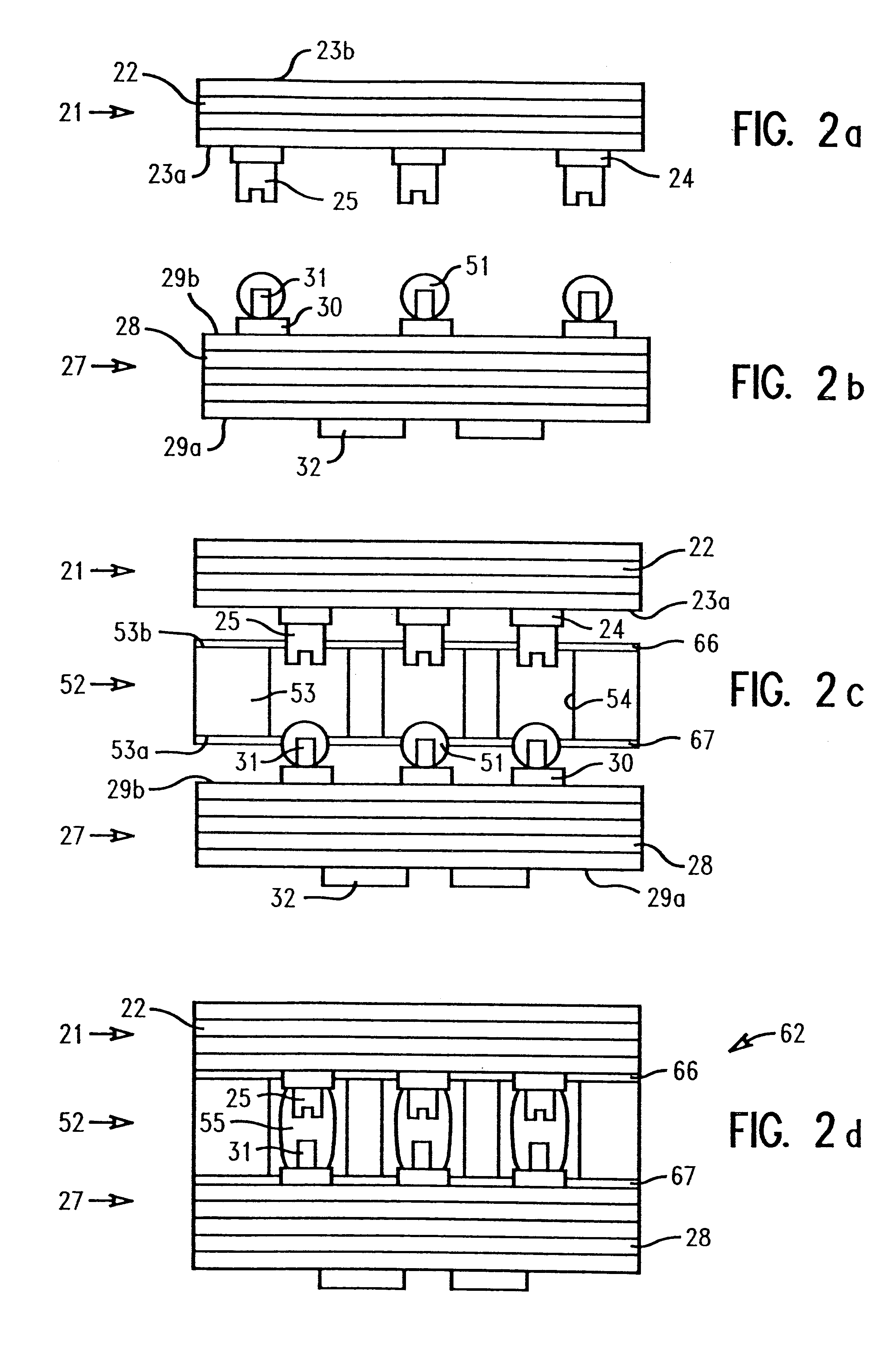Method and structure to prevent distortion and expansion of organic spacer layer for thin film transfer-join technology
a technology of organic spacer layer and transfer-joining, which is applied in the direction of fixed connections, sustainable manufacturing/processing, final product manufacturing, etc., can solve the problems of shrinkage, even distortion, and shrinkage of the active thin film structure area, and achieve high wiring density, reduce thermal stress, and reduce distortion of the thin film.
- Summary
- Abstract
- Description
- Claims
- Application Information
AI Technical Summary
Benefits of technology
Problems solved by technology
Method used
Image
Examples
Embodiment Construction
)
In describing the preferred embodiment of the present invention, reference will be made herein to FIGS. 1a-3d of the drawings in which like numerals refer to like features of the invention. Features of the invention are not necessarily shown to scale in the drawings.
While the following description will be specifically directed to joining a thin film structure to a multilayer ceramic structure it will be appreciated by those skilled in the art that any two electronic components having corresponding contact pads and solder bumps thereon for joining may be formed using the method of the invention.
Referring now to FIG. 1a, a thin film structure is shown generally as numeral 10. The thin film structure comprises a series of thin film layers shown in composite as 11, and as well known in the art, the layers are interconnected with vias and wiring. The thin film structure is shown so that pads 13 having solder bumps 14 thereon are shown on the lower surface indicated as 12a. The opposed s...
PUM
| Property | Measurement | Unit |
|---|---|---|
| thickness | aaaaa | aaaaa |
| pressure | aaaaa | aaaaa |
| thickness | aaaaa | aaaaa |
Abstract
Description
Claims
Application Information
 Login to View More
Login to View More - R&D
- Intellectual Property
- Life Sciences
- Materials
- Tech Scout
- Unparalleled Data Quality
- Higher Quality Content
- 60% Fewer Hallucinations
Browse by: Latest US Patents, China's latest patents, Technical Efficacy Thesaurus, Application Domain, Technology Topic, Popular Technical Reports.
© 2025 PatSnap. All rights reserved.Legal|Privacy policy|Modern Slavery Act Transparency Statement|Sitemap|About US| Contact US: help@patsnap.com



